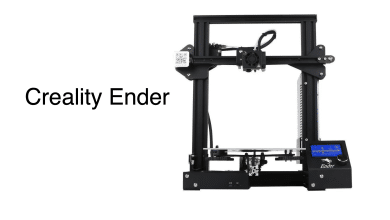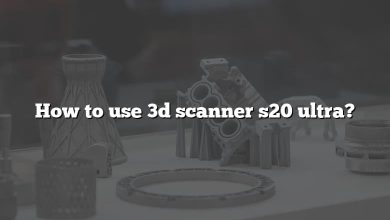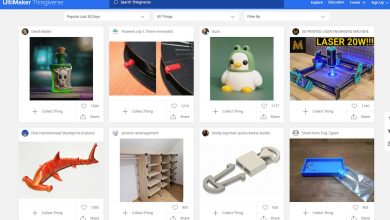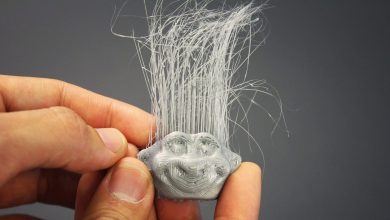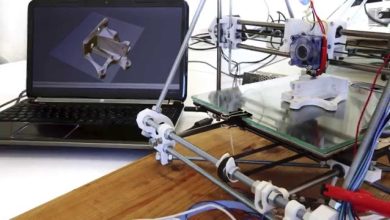Delving into the world of 3D printing can often feel like you’ve stepped into a realm buzzing with an entirely new language. It’s an exciting journey of exploration, teeming with technical jargon, industry-specific terms, and acronyms that can, at first, seem quite overwhelming. But fear not, because once you grasp these terms, you’ll find that they unlock the door to understanding this transformative technology. This article, a comprehensive glossary of 100 terms in 3D printing, is your key. Whether you’re a newcomer trying to get a handle on basic terms or an experienced maker looking to deepen your knowledge, you’ll find this guide an invaluable resource.
A foray into the field of 3D printing is akin to learning a new language, and like any language, the first steps involve learning the vocabulary. Every domain, be it art, music, or technology, has its own unique set of terminology that, once mastered, can turn any novice into an expert. This 3D printing glossary will take you on a tour of the important terms and concepts that underpin this fascinating field of technology. By the time you finish reading, you’ll have a robust understanding of the 3D printing landscape, which will enable you to communicate more effectively and pursue your 3D printing projects with greater confidence.
Your Go-To Guide: 100 Essential 3D Printing Terms Defined
- 3D Printing: 3D printing or additive manufacturing is a process of creating three-dimensional physical objects from a digital file. A 3D printed object is created using additive processes, in which an object is made by laying down successive layers of material until the object is complete.
- ABS (Acrylonitrile Butadiene Styrene): ABS is a common thermoplastic polymer typically used for injection molding applications. In the context of 3D printing, it’s known for its high strength, flexibility, and temperature resistance, but can be a bit more difficult to print with compared to other materials due to its tendency to warp.
- Additive Manufacturing: Additive manufacturing refers to the process of creating an object by building it one layer at a time. It is often synonymous with 3D printing, though it can also refer to other technologies such as selective laser sintering (SLS) and fused deposition modeling (FDM). Additive manufacturing contrasts with subtractive manufacturing, which involves removing material from a larger block to create an object.
- Build Plate: The build plate, or build platform, is the surface onto which a 3D printer deposits material. Build plates can be heated to improve the adhesion of the first layer of the 3D printed object, reducing warping and other potential issues.
- CAD (Computer-Aided Design): Computer-Aided Design (CAD) is the use of computer software to design and document a product’s design process. In the realm of 3D printing, CAD software is often used to create a digital 3D model of the object to be printed.
- CAM (Computer-Aided Manufacturing): Computer-Aided Manufacturing (CAM) is the use of software and computer-controlled machinery to automate a process. In 3D printing, CAM involves the use of software to convert the digital 3D model into instructions (G-code) that the 3D printer can understand and execute.
- FDM (Fused Deposition Modeling): Fused Deposition Modeling (FDM) is one of the most common forms of 3D printing, especially for consumer-level printers. It works by melting a thermoplastic filament, depositing it layer by layer upon the build plate, and allowing it to cool and solidify to form the final object. The layer height and nozzle diameter determine the resolution and level of detail the printer can achieve.
- Filament: This is the material used by FDM printers. It’s a thermoplastic that comes in a spool and is fed into the printer, where it’s heated and extruded through a nozzle onto the build plate.
- G-code: This is the language used to provide instructions to CNC machines, including 3D printers. It tells the machine where to move, how fast to move, and what path to follow.
- Infill: Infill is the internal structure of a 3D print. Instead of printing solid objects (which would take more time and material), infill allows for prints to be partially hollow on the inside. Infill is typically expressed as a percentage, indicating the density of the internal structure.
- Layer Height: This term refers to the thickness of each individual layer of the 3D printed object. Layer height is one of the factors that can affect the resolution and print time of the final product.
- Nozzle: This is the component of a 3D printer that heats and extrudes the filament onto the build plate. The diameter of the nozzle also affects the resolution of the print.
- Overhang: Overhang refers to the parts of a 3D print that extend outwards beyond the layer below. They can be difficult to print without support structures, especially if the angle of the overhang is greater than 45 degrees.
- PEEK (Polyether Ether Ketone): This is a colorless organic thermoplastic polymer used in engineering applications, including in high-performance 3D printing because of its resistance to thermal degradation, mechanical strength, and chemical resistance.
- PLA (Polylactic Acid): This is a biodegradable thermoplastic derived from renewable resources. In 3D printing, PLA is a popular material choice for its ease of use and environmentally friendly properties.
- PolyJet Technology: This is a 3D printing technology that uses photopolymer resins that are jetted from multiple nozzles onto the build platform where they are immediately cured by UV light.
- Raft: A raft in 3D printing is a horizontal latticework of filament that is printed first. It helps with bed adhesion and prevents warping. The actual object is printed on top of the raft.
- Resolution: In 3D printing, resolution refers to the level of detail a printer can output. It’s influenced by factors such as layer height, nozzle diameter, and the precision of the printer’s movements.
- SLS (Selective Laser Sintering): This is a form of powder-based 3D printing where a laser selectively fuses powdered material by scanning cross-sections generated from a 3D digital description of the part on the surface of a powder bed.
- SLA (Stereolithography): SLA is a 3D printing technology that uses a vat of liquid photopolymer resin cured by an ultraviolet laser to build parts a layer at a time.
- Support: Support structures are additional printed pieces designed to hold up overhangs and bridges during the print process. They are usually removed after the print is completed.
- Thermoplastic: A type of plastic that becomes moldable when heated and solidifies upon cooling. Common thermoplastics used in 3D printing include ABS and PLA.
- Warping: This term refers to the deformation that occurs when different parts of a printed object cool at different rates. It’s more common in large prints or prints made with high-shrinkage materials like ABS.
- Z-axis: The vertical axis in 3D space. In 3D printing, movements along the Z-axis correspond to changes in the layers of the printed object.
- Extruder: The part of a 3D printer that pushes the filament into the hot end to be melted and deposited on the build plate.
- Bed leveling: The process of adjusting the build plate so that it’s perfectly parallel with the path of the extruder, ensuring that the first layer of a print sticks evenly across the entire surface.
- Brim: An extra line printed around the base of an object to increase its adhesion to the build plate.
- Binder Jetting: A 3D printing process that uses a liquid binding agent to bind together powder particles, layer by layer, to form an object.
- Direct Metal Laser Sintering (DMLS): A type of additive manufacturing that uses a laser to fuse together metal powder layer by layer to form a solid object.
- Lattice structure: A criss-cross or geometric structure inside a 3D printed object that uses less material while maintaining the strength of the object.
- Post-processing: Any action taken after printing to improve the quality, appearance, or properties of a printed object. This can include removing supports, sanding, painting, or applying a chemical treatment.
- STL file: A common file type used in 3D printing, named for the STereoLithography file format. It represents a 3D model in terms of triangular facets.
- Voxel: A three-dimensional equivalent of a pixel. In the context of 3D printing, voxels can represent a value for material, color, or other properties in a 3D space.
- Hotend: The component of a 3D printer that heats up and melts the filament so it can be extruded through the nozzle.
- Cura: A type of 3D printing slicing software developed by Ultimaker. It translates the 3D model into a language (G-code) that the 3D printer can understand.
- Marlin (Firmware): A firmware for RepRap 3D printers, Marlin supports a wide variety of 3D printers including both Cartesian and Delta style machines.
- Octoprint: A free, open-source 3D printer controller software that provides a web interface for monitoring and controlling 3D printing processes remotely.
- TPU (Thermoplastic Polyurethane): A flexible, abrasion-resistant thermoplastic used in 3D printing for parts that require flexibility and durability.
- PETG (Polyethylene Terephthalate Glycol): A durable and flexible thermoplastic polyester used in 3D printing that combines the ease of use of PLA with the strength and durability of ABS.
- Anisotropy: A property of being directionally dependent, which implies different properties in different directions, as opposed to isotropy. In 3D printing, this often refers to the fact that 3D printed parts may be weaker in one direction due to the layered manufacturing process.
- HIPS (High Impact Polystyrene): A tough, rigid thermoplastic used in 3D printing often as a support material for ABS prints, because it’s easily dissolved in Limonene, a commonly available solvent.
- Nylon: A highly strong, durable and flexible material that’s often used in 3D printing for parts that require these properties. It’s more difficult to print with than PLA or ABS due to its high print temperature and tendency to warp.
- PVA (Polyvinyl Alcohol): A water-soluble synthetic polymer. In 3D printing, PVA is often used as a support material for models with overhangs and complex geometries, and can be easily dissolved in water after the print is complete.
- T-glase: A type of PETT (Polyethylene coTrimethylene Terephthalate) filament that is strong and transparent, making it suitable for applications requiring light transmission.
- Wood Filament: A type of 3D printer filament that contains a mixture of plastic and wood fibers, which gives the printed objects a wood-like appearance.
- Metal Filament: A type of 3D printer filament that contains a mixture of plastic and metal powders. After printing, the object can be post-processed to give it a metallic appearance.
- Carbon Fiber Filament: This filament consists of a standard base material (like PLA or ABS) infused with carbon fibers. This results in a significantly stiffer and more durable material than the base material alone.
- RepRap: A project that aimed to create a self-replicating machine which can make many of the components needed to build more copies of itself. The RepRap movement has heavily influenced consumer 3D printing technologies and practices.
- Closed-source vs Open-source: Refers to the availability of the source design and programming of a 3D printer. Open-source printers provide public access to their design, making it easier for users to modify and improve the printer. Closed-source printers keep their design proprietary.
- Dual Extrusion: Refers to 3D printers that use two extruders to allow for the use of multiple materials or colors in a single print.
- Delta Printer: A type of 3D printer that uses a circular build platform and three arms to control the movement of the extruder. They are known for their speed and taller build volumes, but can be more difficult to calibrate than Cartesian printers.
- Cartesian Printer: The most common style of 3D printer, it uses the Cartesian coordinate system (X, Y, and Z) for movement and positioning of the print nozzle.
- Scara Printer: A type of 3D printer that uses a robotic arm for movement, which can be more precise but also more expensive.
- Slicing: The process of converting a 3D model into a series of layers (slices) that the 3D printer can then print. Slicing software also generates the G-code that instructs the printer how to move during printing.
- Shell: The outer layers of a 3D printed object. The number of shells is also referred to as the wall thickness and can be adjusted to influence the strength and print time of the object.
- Bowden Extruder: A type of extruder setup in 3D printers where the extruder motor is decoupled from the print head and filament is driven through a long tube. This can make the print head lighter and improve speed and accuracy, but it can be less precise with flexible filaments.
- Direct Drive Extruder: In this setup, the extruder motor is located directly on the print head. This generally provides better control of filament feeding and retraction, leading to better print quality, especially with flexible filaments.
- Print Speed: This refers to the speed at which the print head moves during printing. Faster print speeds can reduce print time but may also reduce print quality.
- Build Volume: The maximum size of an object that a 3D printer can print. It’s usually measured in terms of maximum length, width, and height the printer can produce.
- Retraction: The process of pulling filament back from the nozzle during printing. This is used to prevent oozing or stringing when the print head moves without printing.
- Auto Leveling: A feature on some 3D printers that automatically calibrates the distance between the print nozzle and the build plate to ensure that the first layer of a print adheres evenly.
- Heated Bed: A feature on some 3D printers where the build plate is heated, which can improve the first layer adhesion and prevent warping, especially with materials like ABS.
- Glass Transition Temperature: The temperature at which a material changes from a hard, glassy state to a soft, rubbery state. In 3D printing, it’s important to know the glass transition temperature to prevent warping or deformation of the printed object.
- Mesh: A network of polygons (usually triangles) that form a 3D model. Most 3D printers use STL files, which represent 3D models as a mesh.
- Maker Movement: A cultural trend that emphasizes DIY (do-it-yourself) projects, including everything from 3D printing to electronics to robotics. Many 3D printing enthusiasts are part of the Maker Movement.
- Polycarbonate (PC): A thermoplastic polymer that is strong, tough, and heat-resistant. It’s used in 3D printing for parts that require these characteristics.
- Photopolymer: A type of polymer that changes properties when exposed to light. In 3D printing, photopolymers are used in SLA and DLP printers, where they are cured by UV light.
- FFF (Fused Filament Fabrication): Another term for FDM, often used by companies who don’t license the FDM term from Stratasys. It’s a 3D printing process where filament is melted and extruded layer by layer to build a 3D object.
- 3D Scanner: A device that can create a digital 3D model of a physical object. These 3D models can then be modified, improved, and printed using a 3D printer.
- Thingiverse: A website owned by MakerBot that provides users with a free platform to share, download, and discuss 3D models.
- Tinkercad: An easy-to-use, browser-based 3D design and modeling tool. It is often used in education and by beginners to create simple 3D models.
- Digital Light Processing (DLP): A type of 3D printing technology that uses a digital light projector to cure photopolymer resin.
- Material Jetting: A 3D printing process where droplets of material are selectively deposited and cured on the build platform. This method can achieve high detail and a smooth surface finish.
- CAD (Computer-Aided Design): The use of computer systems to create, modify, analyze, or optimize a design. 3D models for printing are usually created using CAD software.
- ABS (Acrylonitrile Butadiene Styrene): A common thermoplastic used in 3D printing known for its strength, toughness, and heat-resistance. However, it can be more difficult to print with than PLA.
- Prusa i3: A popular open-source 3D printer design. It’s a type of RepRap and its design is continually updated by the community.
- Bed Adhesion: The property that ensures a 3D print sticks to the print bed properly. Good bed adhesion is crucial for a successful print, as problems can lead to warping or the print coming loose.
- Print Bed: The surface on which a 3D printer makes its print. The print bed can be heated to improve the adhesion of the first layer of the print.
- Multi-Material Printing: 3D printing with more than one type of material in the same print. This can allow for complex structures with varying properties, and can also be used for support structures that can be dissolved away.
- ColorFabb: A well-known manufacturer of 3D printing filament. They produce many different types of filament, including PLA/PHA, BronzeFill, WoodFill, and more.
- MakerBot: A manufacturer of 3D printers and a subsidiary of Stratasys. They produce the Replicator series of printers.
- Ultimaker: A Dutch manufacturer of 3D printers. They are known for their high-quality printers and open-source approach.
- Simplify3D: A type of 3D printing slicing software known for its wide range of features and compatibility with many different 3D printers.
- Firmware: The low-level software that controls a 3D printer. It interprets the G-code into specific electrical signals to control the motors, heaters, and other parts of the printer.
- Stepper Motor: A type of DC electric motor that moves in discrete steps. Stepper motors are used in 3D printers to precisely control the movement of the print head and the extrusion of filament.
- Belt 3D Printing: An innovative 3D printing technology that uses a conveyor belt as a build surface, allowing for continuous printing and prints with infinite length on one axis.
- Granular Materials Binding: A 3D printing technique in which layers of powdered material (metal or plastic) are selectively bonded together.
- Resin 3D Printing: A form of 3D printing that uses a liquid photopolymer resin, which is cured layer by layer to form the 3D object. This includes SLA and DLP 3D printing technologies.
- CNC Machining: A subtractive manufacturing technology which involves the use of computer controls to operate machine tools like lathes, mills, routers and grinders.
- Lost-Wax Casting: A method of metal casting in which a molten metal is poured into a mold that has been created by means of a wax model.
- Powder Bed Fusion: A 3D printing technology that uses either a heat or a laser to melt and fuse powder together to create a 3D object.
- Directed Energy Deposition (DED): A 3D printing process that involves melting material as it’s being deposited on a surface, typically used with metal materials.
- Laminated Object Manufacturing (LOM): A rapid prototyping system where layers of adhesive-coated paper, plastic, or metal laminates are successively glued and cut to shape with a knife or laser cutter.
- Print on Demand: A digital printing technology in which a product is printed only after an order has been received. In 3D printing, this often refers to services that allow customers to order custom 3D printed objects.
- Selective Laser Melting (SLM): A type of powder bed fusion 3D printing technology where a high-powered laser fully melts each layer of metal powder. This is typically used to produce parts out of a single metal.
- Selective Heat Sintering (SHS): A type of 3D printing technology that uses a thermal print head as a heat source to sinter powdered material.
- Electron Beam Melting (EBM): A type of 3D printing technology that uses a beam of electrons to melt and fuse material together. EBM can be used to fabricate parts out of metal.
- Zortrax: A Polish manufacturer of 3D printers and filaments. Zortrax printers are known for their ease of use, reliability, and high print quality.
- Raft: A flat surface printed underneath the object, which can help with bed adhesion and prevent warping. It is usually removed after printing.
- Stereolithography (SLA): A type of 3D printing technology that uses a laser or other light source to cure a liquid photopolymer resin layer by layer. SLA printers are known for their high resolution and detail capabilities.
Conclusion
As we reach the end of this 3D printing glossary, it’s important to remember that while knowing these terms is a significant step towards understanding 3D printing, it’s just the beginning of your journey. The technology is continuously evolving, and as it does, new terms and concepts will keep emerging. Staying abreast of these changes will keep you at the forefront of the 3D printing world, enabling you to take full advantage of the opportunities it offers.
In closing, we hope this glossary serves as a valuable resource for your 3D printing endeavors. Whether you’re an entrepreneur planning to revolutionize an industry, a hobbyist aiming to create unique models, or an educator preparing the next generation of makers, having a solid grasp of the language of 3D printing is indispensable. So, as you delve deeper into the world of additive manufacturing, let this glossary be your guide, helping you navigate the terminology and understand the processes, materials, and technologies that make 3D printing such a transformative force. Embrace the language of this technology, and watch as it unlocks endless possibilities for creation and innovation.

